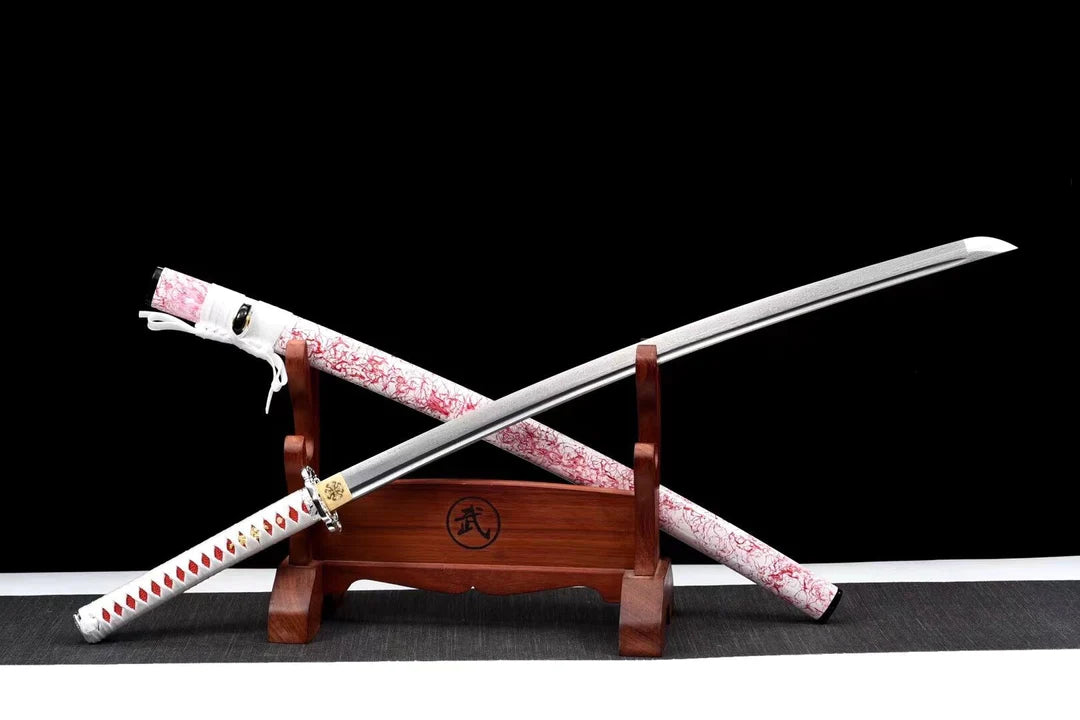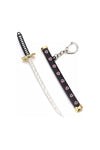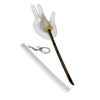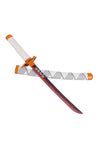
How to Choose Your Katana
Introduction - Easy Guide
Choosing the right katana is essential, whether it's for training, decoration, or practice. In this guide, we'll help you find the perfect katana, focusing on your specific needs and desires.
Katana Usage
Before choosing your katana, determine its usage:
- Training
- Decoration
- Cutting practice
Sharp or Non-sharp
The blade can be sharp or non-sharp depending on the intended usage:
- Sharp for training and practice
- Non-sharp for decoration
You can, of course, have a sharp katana for decoration purposes. If you want a non-sharp katana, just send us an email in advance!
Forge Type
The forging process is a crucial step in katana manufacturing, influencing its structural properties and unique character. Discover the different types of forges, each bringing distinctive nuances:
San-Mai Forge
The San-Mai forge involves creating a composite blade sandwich, where a high-quality steel central layer is wrapped in two outer layers. This technique offers an exceptional balance between the hardness of the central layer and the flexibility of the outer layers, resulting in a resilient and sharp blade.

Honsanmai Forge
The Honsanmai forge is an advanced method that creates a blade composed of three distinct layers, each with specific properties. The central layer is often made of high-quality steel, surrounded by two layers that enhance strength and flexibility. This technique leads to highly performant blades, appreciated by connoisseurs.

Kobuse Forge
The Kobuse forge involves wrapping a softer steel central core with a harder outer steel layer. This process provides the blade with increased resistance to deformation while maintaining an exceptional sharpness. Katanas forged using this method are often valued for their balance between robustness and sharpness.

Steel Choice
Choosing the steel for your katana blade is a crucial decision that influences its performance and durability. Explore the characteristics of different steel types to find the one that best suits your needs:
Manganese Steel
Manganese steel is recognized for its wear resistance and exceptional durability. Ideal for a katana capable of withstanding rigorous training conditions, it also offers good edge retention.
Blade With Bo-Hi and Without Bo-Hi
The choice between a blade with or without Bo-Hi, also called a groove, is an important consideration when acquiring a katana, as it influences its weight, maneuverability, and sound characteristics.
With Bo-Hi
Blades with Bo-Hi feature a groove that extends along the central part of the blade. This feature has several advantages, including reducing the total weight of the katana, making it lighter and more maneuverable. The presence of Bo-Hi also promotes better heat dissipation during rapid movements, reducing the risk of blade deformation. Additionally, Bo-Hi creates a distinctive whistling sound during cutting, adding to the aesthetic and sensory experience of the katana.

Without Bo-Hi
Blades without Bo-Hi, also known as fullered blades, are more massive and offer a more uniform weight distribution along the blade. This can give the katana an additional sense of stability, ideal for more powerful cuts and deliberate movements. Although these blades may be heavier, they benefit from increased robustness due to their solid structure without the central groove.

Design
In addition to functional aspects, design is also important. Choose a design that personally appeals to you.

Conclusion
By carefully considering usage, sharpness, forge type, steel choice, and design, you will be able to choose a katana that meets your specific needs. Invest in a quality katana, and it will become a loyal companion in your martial journey or a centerpiece in your collection.































